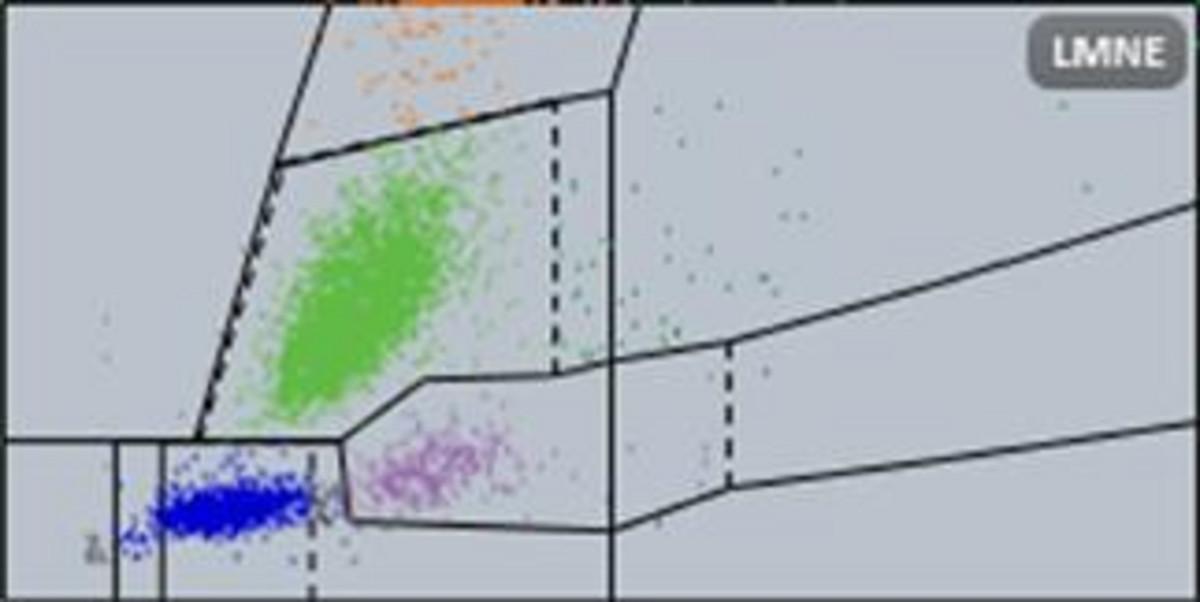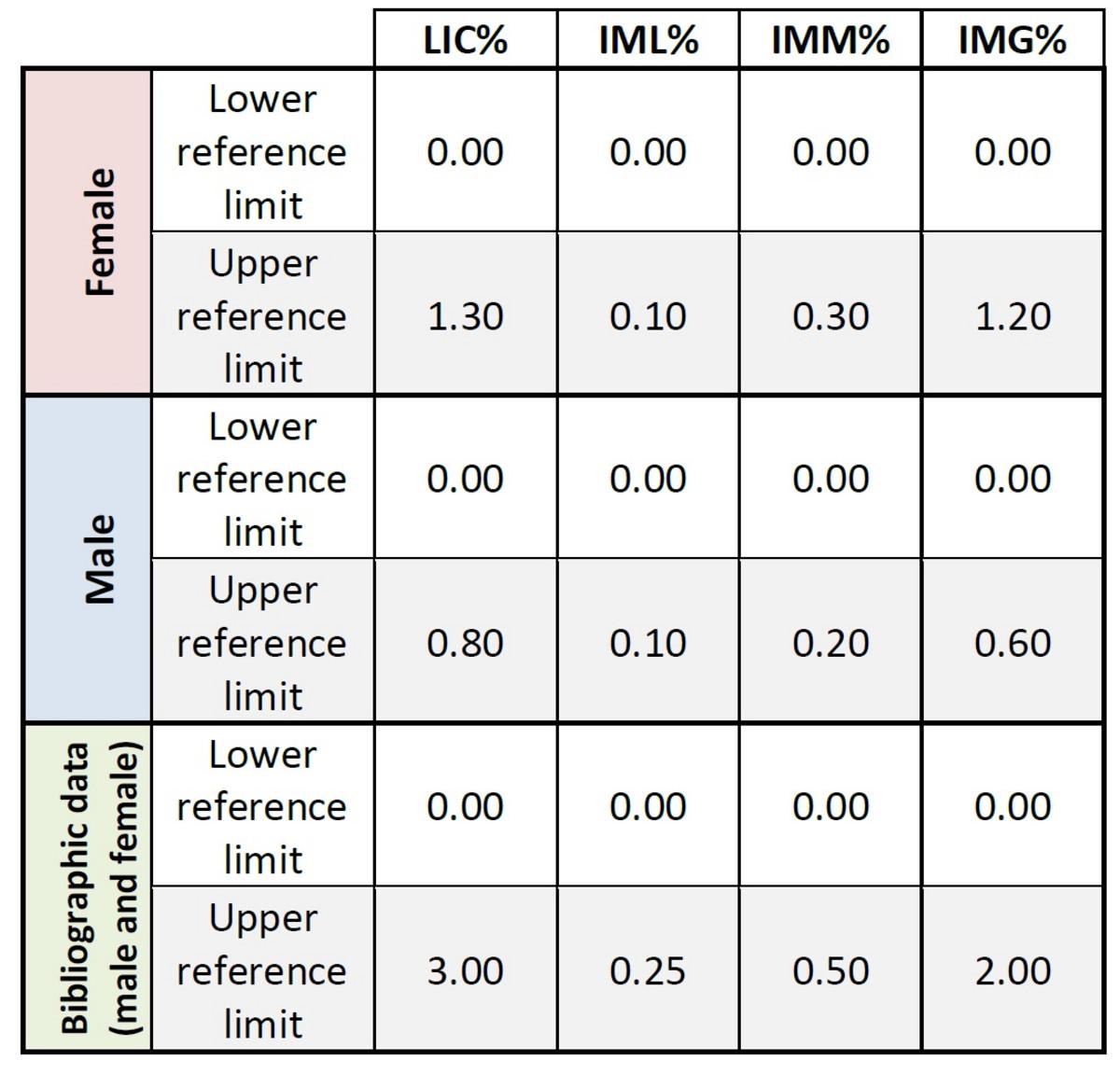

Assessment of blood cell counts i.e. Red Blood Cells (RBC), White Blood Cells (WBC) or platelets from manual and automated cell counters is central to the diagnosis and management of hematologic diseases. Only with just few exceptions, most of the manual methods are replaced by automated particle counter methods. The selection of analyzers with a variety of technological principles and techniques is made further complex due to the addition of new parameters and their specific utility throughout the patient care process.
The current generation of hematology analyzers is equipped with new and improved specific parameters, which are useful to clinicians not only for diagnostic information, but also providing invaluable prognostic value for their patients. Many new hematology parameters have been added by instrument manufacturers, some with just different terminology but similar clinical value as have been available earlier.
White blood cells, or leukocytes, are an important part of body's immune system as they are responsible for protecting the body against infections and invading organisms. WBC differential determines the percentage of each type of white blood cell present in the blood. A differential can also detect immature white blood cells and abnormalities, both of which are signs of potential issues.
There are five types of leukocytes (lymphocytes, monocytes, neutrophils, eosinophils and basophils). Apart from basophils, these can be visualized on the LMNE Matrix (Figure 1) of Yumizen hematology analyzers.
Figure 1 : LMNE Matrix
In this matrix, optical extinction (Y-axis) is plotted against volumes (X-axis) to form an image with several clusters of cells.
Yumizen hematology analyzers are characterized by their capacity to manage precisely whole blood volumes added to their high level of automation. This allows accurate defining two additional parameters for leukocyte populations: Atypical lymphocytes (ALY) and Large Immature Cells (LIC), reported in percentage as well as absolute counts.
LICs are a minor subset of WBCs normally found in bone marrow tissue where the hematopoiesis takes place. This subset consists of various immature forms of myeloid or lymphoid cells combined. In certain clinical or even physiologic conditions, LICs, not fully matured, especially in terms of their size and complexity, may get released into the peripheral blood. Thus, they are found to be larger than normal mature blood cells, and immature in their nuclear complexity and in the extent of their cytoplasmic granularity.
These events occur both in benign (reactive to stress, infection or bone marrow regeneration) or neoplastic disorders (myeloproliferative disorders, leukemias or lymphoproliferative disorders). Among the LICs, we can find (1):
• Promonocytes • Monoblasts • Metamyelocytes • Myelocytes • Promyelocytes • Myeloblasts • Blasts (myeloid or lymphoid) • Prolymphocytes • Megakaryocytes
Several blood diseases have been investigated by biologists and the LIC parameter showed an acceptable correlation between automatic and manual counts. This parameter was definitively used for flag purpose. we have to recognize that it is designed to detect and flag abnormal cells in the sample on electro-optical attributes and further cytology analysis is needed to provide more information on a patient's condition.
In the high end, state-of-the-art Yumizen H series of instruments from HORIBA, total LICs are represented as sum of IMM (Immature Monocyte), IML (Immature Lymphocyte) and IMG (Immature Granulocyte) (2). Such cells, when presented to the analyzer, are identified as a separate group in the LMNE Matrix (Figure 2).
Figure 2 : LICs on LMNE Matrix
The LIC parameter is thus used to flag samples containing cell subpopulations mentioned above.
LIC parameter, along with IMM, IML and IMG is given by Yumizen H1500 and H2500 for research purpose only (RUO) and should be interpreted carefully. However, we have tried to enhance this additional information given by the analyzer by determining a reference interval for a given population.
The study was performed according to the CLSI C28-A3 guideline (Defining, Established, and Verifying Reference Intervals in the Clinical Laboratory). A total of 240 (120 males and 120 females, > 18 years of age) whole blood samples collected in EDTA from apparently healthy Caucasian donors were analyzed in duplicate on three instruments, two Yumizen H2500 and one Yumizen H1500. Samples were kept at room temperature between the sampling and the test. The reference interval was determined in order to include the lower and upper reference limits, which enclose 95% of the values from the reference population subjects. The results are given in Table 1.
Table 1: Lower and upper reference limits determined by the study for LIC parameter compared to values from bibliographic data (3, 4).
As obtained values vary with sample population and/or geographical location, it is highly recommended to each laboratory establish its own normal ranges based upon its local population. In this context, according to the § 5.5.2 of the Standard ISO 15189:2012, the laboratory shall define the biological reference intervals or clinical decision values for a specific parameter in order to validate a test result. Reference intervals shall be based either on normal values observed after a series of tests in a healthy population, or, if it is not possible to use this method, on reliable scientific data.
LIC Alarm: The large immature cells morphological alarm appears when the number of counted particles in a given area of LMNE matrix (Figure. 1) is higher than the limit set by the LIC# or LIC% of counted particles in relation to the total number of WBCs. Based on our internal study and the bibliographic data, the LIC alarm values are set at both 3% and 0.30# (Table 2).
Table 2: Instrument set cut-off limits (high -h and critical - H values).
A small number of blasts and poorly differentiated monocytes are commonly found in the peripheral blood of healthy individuals (5). During the study, we also observed a higher number of large immature cells in men, compared to women. However, their number remains small despite the variability of the results sometimes obtained for the same individual.
Care should be taken while interpreting the LIC count results of pediatric patients, especially neonates, due to their immature immune systems and the greater number of immature cells in the circulating blood.
Immature myeloid populations, such as promyelocytes-myelocytes, metamyelocytes, band neutrophils, monocytoid precursors, and activated monocytes are released in infectious disease, especially as an early response. In this context, a "left shift" is a term used to denote that there are young/immature white blood cells present. It indicates that infection/ inflammation present has induced a bone marrow response of increased WBC production followed by early release into blood even before they have fully matured. Clinician should be alerted if such LIC-flagged sample is from the immunocompromised or critically ill individual.
The sensitivity for flagging a left shift on Yumizen hematology analyzers increases with an increasing proportion of neutrophil bands, metamyelocytes, myelocytes and promyelocytes (6, 10).
Myelodysplastic syndrome (MDS) is a condition in which stem cells present in the bone marrow fail to mature normally into red blood cells, white blood cells, and platelets. Circulating micromegakaryocytes, multiple small nuclei separated by strands of nuclear material and large mononuclear cell with dysmorphic nuclear features have been described in peripheral blood of patients with MDS. Although there are several co-criteria that help to confirm the diagnosis of MDS, including studies with flow cytometry, bone marrow histology and immunohistochemistry, or molecular markers, the LIC flag can be a first warning sign for a serious clinical problem (7, 8).
Ten years ago, HORIBA introduced the extended 5 part diff comprising Immature Granulocyte, Monoblast and Lymphoblast counts based on volume and optical extinction measurements, with two additional populations, the LICs and ALY. Since then, the LIC parameter has been used to flag samples containing abnormal leukocytes. When immature or abnormal white blood cells are present, automated differential results warrant a manual blood smear review. Compared to similar products, Yumizen hematology analyzers have a good performance of the 5-part leukocyte differential analyses and LICs, strongly correlated to microscopic cytology analysis (9, 10).
Taken alone, the LIC parameter gives little insight, but which nevertheless remains a precious supplementary information obtained quickly, without any additional reagent, and therefore at no additional cost.
1. DP.Lokwani, The ABC of CBC, Interpretation of Complete Blood Count & Histograms, JP Medical Ltd, 2013
2. Clinical Case Studies, Interpretation Guide for HORIBA ABX Series 5-Part Hematology Analyzers
3. C. Sultan / M. Gouault - Helman / M. Imbert, AIDE MEMOIRE D'HEMATOLOGIE. Service Central d'Hématologie de l'Hôpital Henri Mondor, Faculté de médecine de Créteil (Paris XII). 1998 Troussard X, Vol S,
4. E. Cornet, V. Bardet, JP. Couaillac, C. Fossat, JC. Luce,E Maldonado, V. Siguret, J. Tichet, O. Lantieri, J. Corberand. Full blood count normal reference values for adults in France. Journal of Clinical Pathology (2014) 67 (4): 341-4.
5. J. Oertel, B. Oertel, J. Schleicher, D. Huhn, Detection of small numbers of immature cells in the blood of healthy subjects. Journal of Clin Pathology, 1998;51:886????890
6. R Siekmeier 1 , A Bierlich, W Jaross, The white blood cell differential: three methods compared, Clinical Chemistry and Laboratory Medicine, 2001 May;39(5):432-45.
7. G. A. Hamid, A. W. Al-Nehmi and S. Shukry, Diagnosis and Classification of Myelodysplastic Syndrome. Book: Recent Developments in Myelodysplastic Syndromes, January 30th 2019, IntechOpen.
8. Peter L. Greenberg,James E. Thompson, MD, and Peter Westervelt, MD, PhD, Myelodysplastic Syndromes. Clinical Practice Guidelines in Oncology. Journal of the National Comprehensive Cancer Network. 2011 January ; 9(1): 30????56
9. M. Mateckaa, and O. Ciepielaa, A comparison of Sysmex-XN 2000 and Yumizen H2500 automated hematology analyzers, Practical Laboratory Medicine. 2020 Nov; 22: e00186.
10. ME. Arroyo, MD. Tabernero, MA. García-Marcos, A. Orfao, Analytic performance of the PENTRA 80 automated blood cell analyzer for the evaluation of normal and pathologic WBCs, American Journal of Clinical Pathology, 2005 Feb;123(2):206-14.
Global Hematology Solution
Hematology Analyzer
Hematology Analyzer
Hematology Analyzer
Do you have any questions or requests? Use this form to contact our specialists.



